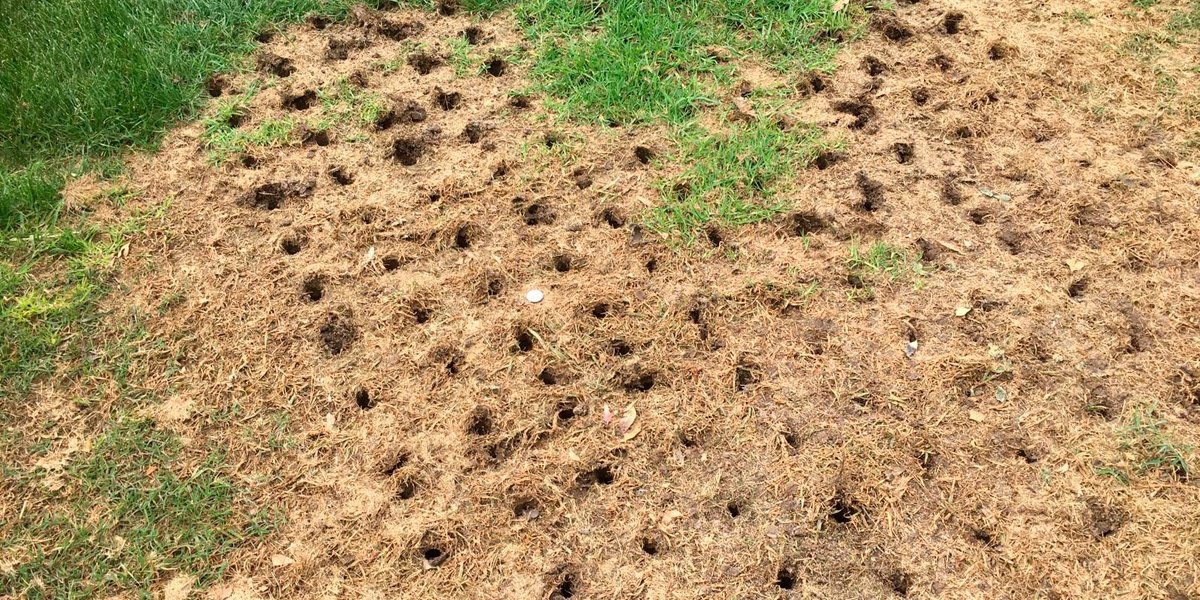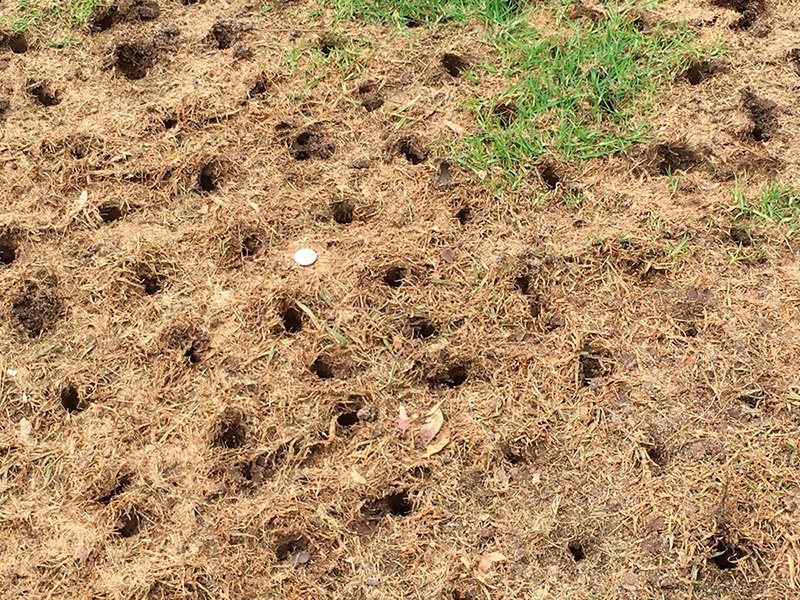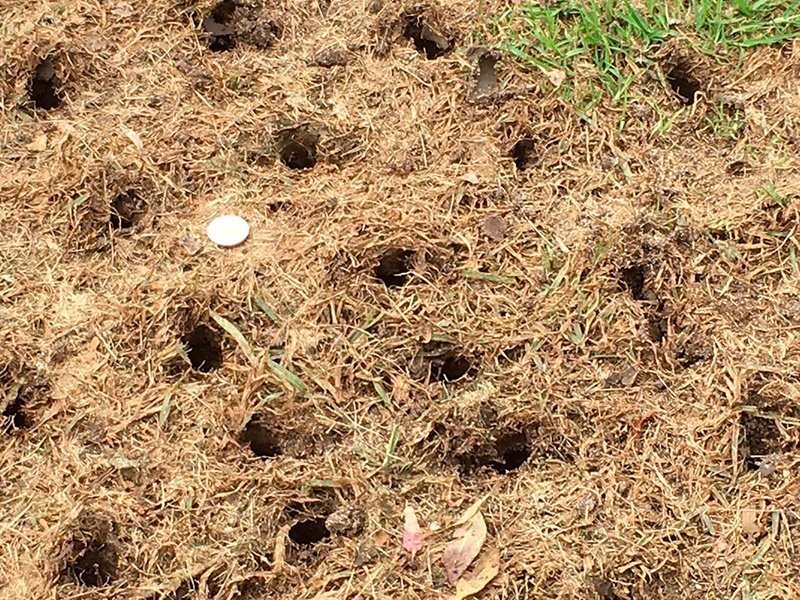Spring turf cultivation is a continuing process at Atalaya Golf & Country Club. Over the past several weeks the process has been completed on the greens of the Old and New courses, as well as the practice putting area and the Old Course tee boxes. Now, solid tining for very deep decompaction of the soil is underway on the fairways and roughs.
Normally this work is carried out during the summer months; however, with the closure of our courses as a result of the COVID-19 pandemic, the decision was made to take advantage of the time when our courses are not being used to accomplish this necessary maintenance.
The fairways and roughs on all golf courses suffer from soil compaction, and at Atalaya we are especially burdened by the problem as a result of the fine-textured, clayed soils that underlay our courses. Atalaya’s issue is further provoked by the heavily concentrated traffic patterns and extensive use of golf buggies experienced by our courses.
When soil is compacted the level of water percolation and infiltration into the soil is decreased and water loss by runoff is increased. Root systems become restricted because of a lack of aeration, and the health, vigour and density of the turfgrass declines. The combination of all of these factors causes a decrease in the quality of the playing surface.
Once a soil compaction problem is diagnosed, turf cultivation is required to alleviate it. The process involves coring, the use of solid tines, and, occasionally, slicing.
At Atalaya we initiate the process by using our mechanically powered, vertical-action coring machine to create deep-action, solid punching tines. This machine produces a relatively high density of hole openings while progressing at a reasonable forward speed.
No soil is removed with these solid tines, and the work is best accomplished during periods when the soil is moist, yet not water saturated. With the damp spring we are experiencing, our current weather conditions are proving optimal for executing this work.
The solid tines that we use are 25 mm in diameter and 200 mm in length. They are pushed deeply into our fairways and roughs, allowing the opening of holes in soil layers and dense, clay-ridden soil to depths which cannot be achieved with other coring, slicing and spiking devices.
Special attention is, of course, given to all of the areas of the fairways and roughs where golf buggy traffic is more highly concentrated.
The project is another illustration of Atalaya’s continual committent to maintaining its two championship golf courses in the best possible condition during the pandemic.




